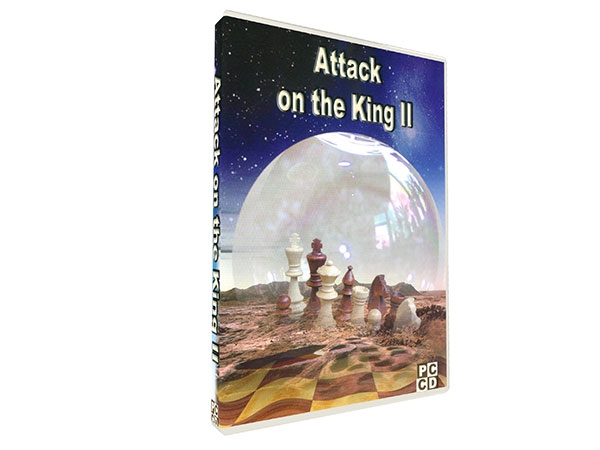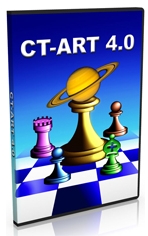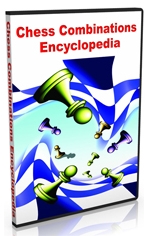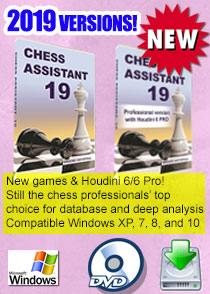Improvement for intermediate players (1200 – 1600 Elo)
Improvement Guide Articles
Here are some articles by GM Alexandra Kosteniuk and chess guru Steve Lopez on how best to improve at chess from different levels. You can come back to this main page anytime.By now you’ve learned much about chess basics; you may even be playing chess regularly online or at a chess club. It’s now time to move onward and acquire new chess skills.
Early in this stage of your chess career you should continue your study of tactics and forced mates, but you’re ready now for more complex situations. You should begin solving forced mates in two moves. After you top the 1400 Elo mark you should increase the complexity to mates in three and four moves. Your tactical studies should also begin to cover more complex ideas; you should be incorporating interference motifs, as well as deflection and decoy problems, into your daily exercises. It’s also appropriate at this stage for you to begin solving dozens of problems a day, exercises which include the new motifs you’re studying as well as the ones you previously studied as a beginner (pins, forks, mates in one, etc.).
Your endgame study should also now include some more complex endgames, such as Rook and pawn vs. Rook. You’ll also want to periodically review the King and pawn endings you’ve already encountered.
Now that you’ve reached intermediate status (often called “club player” level) you should begin some investigations into higher-level concepts. You’ll need to study defense in chess to learn how to better defend against mates as well as against material threats. It’s also time to start your strategic education. Learning the elements of chess strategy helps you to plan your game by assisting you in deciding on the best way to arrange your pieces to exploit weaknesses in your opponent’s position. Understanding basic strategic themes, like the value of open lines, strong and weak squares, as well as the ability to distinguish between exchanges which are favorable in the long term compared to unfavorable exchanges (especially those involving minor pieces) will provide valuable guideposts in deciding what to do when there are no immediate tactics available in a position. Additionally, good strategic play will provide you with a better position than your opponent’s; this will lead directly to tactical opportunities.
Expanding your opening knowledge is also a key to your advancement to the “experienced club player” plateau. You should seek to both broaden and deepen your understanding of the openings – broadening it by learning additional openings, and deepening it by not only learning more variations of openings you’ve encountered but also learning the ideas behind the openings you play.
If you’ve not already invested in a good computer chess program, now’s the time to do so! As noted in the previous section, it’s important to use a program with variable strength settings so that you’ll have an electronic opponent which will challenge you (by playing a bit stronger than you do) without overwhelming you. The program you use should also be capable of analyzing your games (and ones played against your human opposition in addition to ones played against the computer itself) which will provide you with a guide for further chess study, since the analyses will indicate the areas in which you need to improve.
Several of the courses presented in the previous section will still be appropriate for players in the 1200 to 1600 Elo range: Advanced Defense, Chess Tactics Level II, and Complete Chess Course.
After completing Chess Tactics Level II, you should advance to Chess Tactics Level III:

The 1,145 advanced tactical positions in this course are suitable for players from intermediate to master level. The exercises are categorized by tactical motif and the difficulty level increases as one progresses through the problems within a given grouping. Hints are also provided should you become “stuck” on a particular problem.
Mating Combinations is another excellent resource for improving your technique at finishing a game:

In this course, checkmates are classified into 14 general themes, with a total of 1,200 instructive positions presented. Then you’re able to try your hand at practicing your checkmate skill with 700 problems, each of which can be played against the built-in chess program to simulate an actual game environment.
Attack on the King II picks up where its predecessor volume leaves off:

The 2,500 exercises in this course will instruct you in longer (three to four move) mating combinations, and will challenge your imagination and ingenuity as you try to find solutions to these more complex mating sequences.
Another tactics resource will be extremely valuable to you, not just now, but throughout the remainder of your chess career. CT-ART 4.0 is an award-winning tactical training package which no serious chess player can afford to be without:

CT-ART 4.0 teaches you about the various tactical chess motifs with clear instructions and annotations, and then it lets you practice what you’ve learned. This incredible tactics course contains 4,000 exercises: 2,200 basic tactical problems and 1,800 auxiliary tactical examples in a massive, yet easy to use, chess training package.
Now that you’re ready to start learning opening ideas and theory, Opening Lab is an outstanding resource for your opening studies:

This complete, compact opening manual contains theoretical overviews of all the chess openings, designed to teach you opening ideas rather than presenting a mere “drill” of chess opening variations. For each opening presented, you’ll find evaluations as well as explanations of the characteristics of the key moves in the opening, plus instructive games played by some of the greatest players in the history of the game. Opening Lab is the ideal single reference for chess openings, designed for players from club level up to professional players.
Finally, a similar “all in one” approach can be found in Chess Combination Encyclopedia:

More than 100 separate tactical themes are presented in Chess Combination Encyclopedia, illustrated by more than 4,000 examples and exercises, categorized into organized sections. As you solve the chess problems in each section, successive problems become more difficult and present a gradually increasing level of challenge. And, as is the case with the chess courses we recommend, the program keeps track of your success and progress, providing you with constantly changing statistics and rating information.
As for a chess computer program, Chess King (described in the previous section) is a terrific all-in-one chess package. Not only can you play games against the program and have Chess King analyze them (as well as your games against human players), the training exercises and chess quests will challenge and instruct you.































